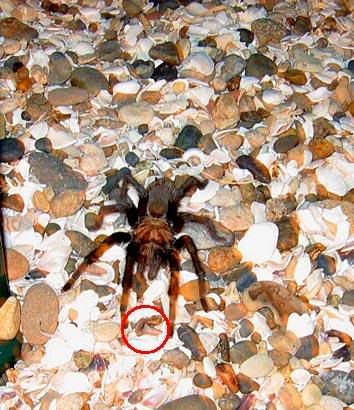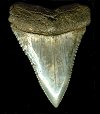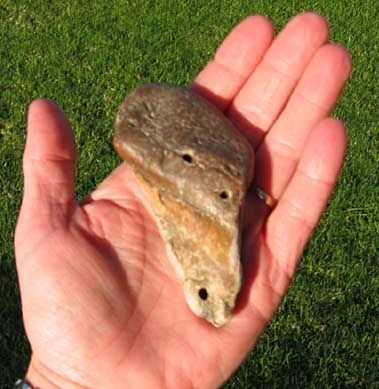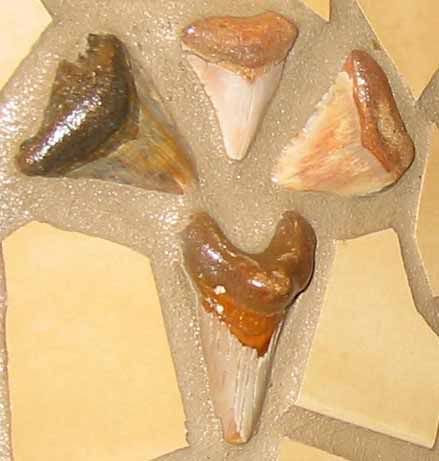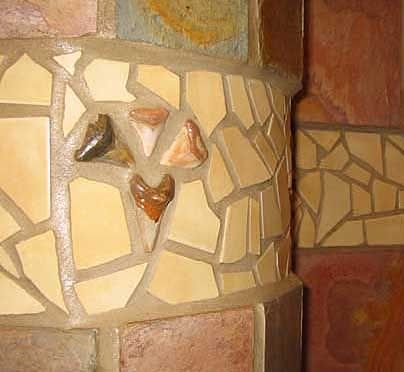It takes a while to get used to the site but, has many pictures and info on the evolution and lineage of sharks. It?s easy to get lost with all the different links presented on each page, some at the top, some on the side, some on the page...and all of it interesting, at least to a paleontologist

Where exactly (or approximately
 ) did you collect the teeth.
) did you collect the teeth.I agree with sharksbaja that the tooth in the picture looks like an Isurus, unless it has serrations (can't tell from the pic), then it is probably one of those transitional species between great whites and mackos (Cosmopolitodus ) or just a regular great white (Carcharodon carcharias )
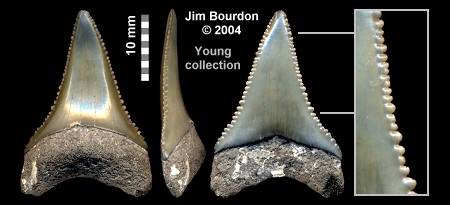
----------------------
YOU SAY 'CARCHARODON', I SAY 'CARCHAROCLES'
Actually, you may be right but you may be wrong also Taco on which order the Makos and GR whites and Megalodon fall into.
This debate has raged on for a long time. My personal opinion after studying the teeth up close convincees me that Megalodon and GR whites share the same order or DNA profile simply because of the V-shape and serrations. Mako teeth have none .
-------------------------
Great White.org:
"Upon researching further and digging into the depths of material on Megalodon at my local university library, I came upon a controversy that apparently has been raging between paleontologists (scientists who study fossils to learn about animals of the past) and marine biologists for a few years. It seems that several prominent paleontologists believe that Megalodon should really be classified as Carcharocles megalodon and not Carcharodon megalodon.
Big deal, right? Who cares what we call a long-dead shark? Plenty of folks, it turns out. As Jim Bourdon points out at his excellent website, Megalodon is a "poster child" for those who study sharks much like Tyrannosaurus rex is for those who study dinosaurs. Imagine the uproar if paleontologists came forward and wanted to change its name from T. rex to T.somethingelseus and you start to understand the emotional nature of the controversy.
As for the factual basis of controversy, this can be found in studying the ancestry of the GW. GWs are part of a grouping known as mackerel sharks, a grouping which includes the salmon, porbeagle, and mako sharks. One of the mako's ancestors is an extinct shark known as Isurus hastalis. Comparisons of the teeth of I. hastalis and C. carcharias reveals that they are remarkably similar, the only difference being that I. hastalis teeth are smooth, lacking serrations. In the mid-80s, a 5-million year old shark specimen was found that some scientists have concluded links I. hastalis with C. carcharias as it had "weakly" serrated teeth. If true, this could indicate that the GW is a likely descendent of I. hastalis.
These teeth from the modern GW (left) are quite similar to the teeth of the extinct I. hastalis (right) but notice the lack of serrations in I. hastalis.
Here's where it gets fun. Let's say that the GW is a descendent of this ancient mako-like shark. Megalodon does not share this immediate ancestry and thus, belongs in a different genus entirely. Carcharocles had been put forth as a genus for a few other species (C. angustidens, C. auriculatus, & C. sulcidens for those keeping score at home) and it is in this genus that some say Megalodon belongs.
In support of the Carcharodon camp are three main points as given by Dr. Samuel Gruber - again, by way of Jim Bourdon's website.
There is a unifying tooth structure that connects all the great tooth sharks to the living C. carcharias i.e. tooth shape & the arrangement and placement of these teeth in the jaw
Fossil teeth assigned to C. carcharias have been found in deposits that are much older than the teeth from the 5-million year old specimen I referred to above that supposedly links Isurus hastalis and C. carcharias meaning that the GW has been swimming around since before this "intermediate" species appeared.
Biochemical (DNA) evidence presented by Andy Martin strongly suggests that Isurus hastalis and Carcharodon diverged 40 my ago well before the age of the "intermediate tooth."
What does it all mean? It depends on your viewpoint - how badly do you want C. megalodon to be related to C. carcharias? Judging from the heated exchanges I've read on the Internet, plenty of experts are on either side of the debate with most paleontologists firmly on the side of Carcharocles and most marine biologists showing their love for Carcharodon.
THE HUMBLE OPINION OF AN IDIOT
Me? I have to say that the Carcharocles camp seems to hold the most weight in my mind. I've got tooth specimens from Otodus obliqus, C. auriculatus, I. hastalis, and I. escheri in my collection and I can see the progression that Bill Heim and others have argued - but hey, who am I?? Just a guy from Arizona. I will say that the compelling piece of evidence for me is the tooth shape from these two progressions - the teeth that lead to C. carcharias all share a certain degree of "flatness" while the teeth that lead to C. megalodon have a more cone-like shape."
So, the jury is still out. I would like to know if anyone has found a tooth from an extinct great white.
Ola candy:
You obviously hit the Mother Lode. My thinking is that 10-15 million years ago the peninsula while still part of "Pangea",North and South America split off . The depth of the SOC and the recent earthquake may attest to that. Also many volcanic flows occured. Events like that bring millions of years of deposits toward the surface. It's lucky to discover an ancient seabed where lagoons and shallows constantly left animals remains. It is a fantastic sight with thousands of teeth and sometimes other petrified animals like the awesome ammonites can be found.
Shark teeth like the one you show is a typical example that can be found in many parts of the world. Many times these teeth are found in sandstone and it renders the toothy fairly brittle. Many megalodon teeth on the other hand from rich mineral laden SE USA yield very hard teeth.
I. Hastalis can be found in abundance in Chile and Peru. Were the m. carcharocles pieces of poor quality. The ones I have seen were pretty worn and unattractive with little esthetic value.
In which areas have you seen them? Were your neighbors with you?
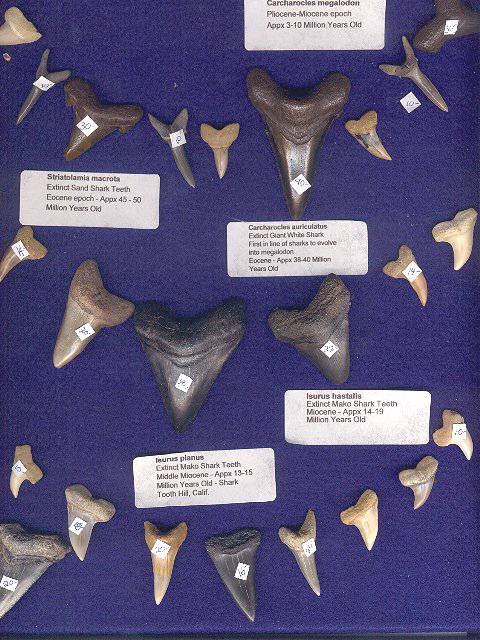
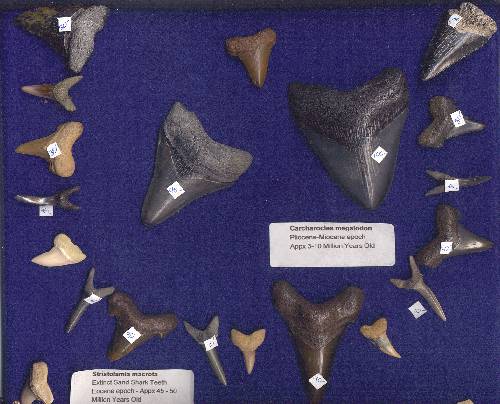
notice the bicuspid type tooth of the extinct great white:
[Edited on 1-22-2006 by Sharksbaja]

